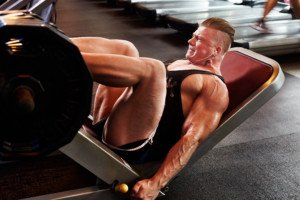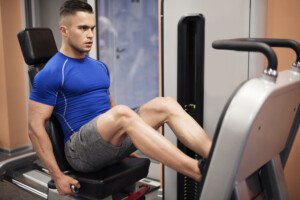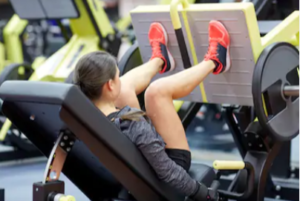
Does doing leg presses make your legs shake?
So your legs shake while doing leg presses; what is going on here? I’m a former personal trainer and was not uncommon for my clients’ legs to start shaking in the middle of performing pressing routines.
And when this happened for the first time, almost always, if not 100 percent of the time, the client would ask, “Why are my legs shaking?”
If this is happening to you, do not worry. I told my clients that leg shaking is a sign of very hard work, in combination with the lower body performing a routine that it’s not accustomed to.
This is a simplistic explanation, but I obtained a more thorough explanation from Fabio Comana, Senior Fitness Educator for the National Academy of Sports Medicine (NASM) as well as an ACSM-certified personal trainer
He explains that when your legs shake during presses, it’s “nothing really to be concerned about other than the fact you have exerted yourself a little hard and the muscles are not receiving adequate oxygen.
“The shake experienced during the exercise is simply muscle unaccustomed to this intensity of work — during recovery, most commonly attributed to muscle fatigue.
“I would doubt any neural or physiological concern unless damage with injury was inflicted upon the muscle.”
Some people report quivering legs after the exercise, but what about during?

Freepik.comgpointstudio
Well, limbs are under the most exertion during a strenuous routine.
When my clients’ lower limbs shook, this told me they were pushing their absolute hardest and had a high tolerance for lactic acid buildup, or that wicked “burn” that occurs in strenuously-working muscles.
I also told my clients that the quivering or trembling is a temporary reaction in their legs.

Shutterstock/Syda Productions
After several more workouts on the pressing apparatus, or whatever maneuver causes the quivering, their muscles will start adapting and will eventually no longer cause the trembling.
Additionally, I inform clients that once the routine is completed, the quivering should stop.
When muscles are short on oxygen, as a result of a very intense exercise routine, they may spasm, and this is what you perceive as the shaking.
These are benign spasms, which may also be on a much smaller scale in the form of muscle twitching.
The reason that the whole-limb-shaking is more likely to occur in legs, than in the arms, is because the lower body has the largest muscle groups in the entire body, and hence, these large, strong muscles are able to generate more force production than the muscles of the upper body can.
This means greater potential for lots of work to get done in a short amount of time, and as a result, muscles are apt to get depleted of oxygen in very hardworking people.
Due to the mechanics of the leg press machine, a person can exert quite a bit of effort with this equipment, and shaking is more likely to occur due to the person’s body position, versus when he or she is performing barbell squats.
 Fabio Comana is frequently featured on TV, radio, Internet and in print publications, and has authored chapters in various textbooks and publications.
Fabio Comana is frequently featured on TV, radio, Internet and in print publications, and has authored chapters in various textbooks and publications.
 Lorra Garrick is a former personal trainer certified by the American Council on Exercise. At Bally Total Fitness she trained clients of all ages for fat loss, muscle building, fitness and improved health.
Lorra Garrick is a former personal trainer certified by the American Council on Exercise. At Bally Total Fitness she trained clients of all ages for fat loss, muscle building, fitness and improved health.
.











